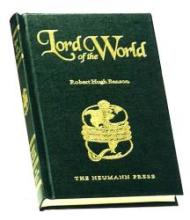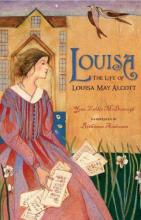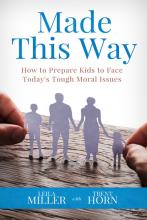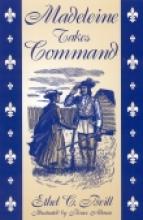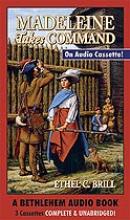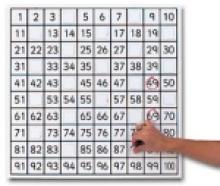No name
Lord of the World
The setting is a future society where the Catholic Church is no more than an embattled remnant. In the popular and intellectual view, culture has moved past the "need" for faith in the supernatural. Near the beginning of the book, two young priests discuss with their superior how to regain some Catholic foothold in a culture which has been de-sacramentalized; of the two, one goes over to the enemy's side, while the other will be hunted and scorned for his faith. The latter priest, Father Percy, a sort of focal point of the book, has the odd distinction of being physically almost identical to his counterpart, a mysterious international leader who has a more-than-human influence on the people he gathers around him. This anti-Christ figure is personable, not obviously evil, and seems in all ways more powerful than the fugitive priest - but as Christ's representative, Father Percy is ultimately victorious in the task he is called to carry out. Their physical resemblance seems to be a device to underline the contrast.
The contrast is also demonstrated in their respective influences on a married couple and the husband's mother, who are key characters in the book. The mother is drawn back towards the sacraments as she drifts closer to death while the attractive couple move from kind "tolerance" to active antagonism for the church and all it represents.
Modern humanitarian secularism eases into savage barbarism and the light of truth seems to flicker and die, but though the events are dark, the ending demonstrates that the battle has been won on a supernatural level even while lost by worldly standards.
I would probably save this book for an older high-schooler who is mature enough to distinguish between tenets of the faith and imaginative extrapolation. It might be quite interesting to read this book alongside some secular works in the same genre - Aldous Huxley's Brave New World, Orwell's 1984 and Animal Farm, or even some of the works of H.G. Wells. Another book written from a Catholic perspective, a science fiction post-apocalyptic classic from the 1950's, is Walter Miller's A Canticle for Leibowitz. One more book which deals with the effect of modernism on society is C.S. Lewis's That Hideous Strength, the last of his Space Trilogy. I could see these books being read as an introduction to modern worldviews in perhaps 11th or 12th grade.
Louisa
I love picture books and I love biographies... and I love it when both are combined successfully! This warmly illustrated picture book tells of the most beloved American author Louisa May Alcott. Her family was definitely sui generis, holding unusual beliefs and moving often, and Louisa began thinking and writing poetry at a very young age.
This picture book sheds light on what a noble soul Louisa had, filled of generosity, integrity and character. Highly recommended especially for young readers who love the wonderful Little Women author.
Love in the Little Things
Lunch Bag Notes
Made This Way
This new book by Leila Miller and Trent Horn is an answer to Christian parents' prayers. Which of us hasn't wondered how to talk to our kids about these difficult moral issues or felt overwhelmed at the thought of figuring out how to do it lovingly and without fear? Especially since these issues weren't even on the radar when we were growing up. As the back cover notes:
A generation ago, Christian parents didn’t have to worry about how to explain transgenderism to their nine-year-old, or help their teenager deal with mockery at school for believing in traditional marriage.
After they cover what the Church teaches on each topic and why, Leila Miller (mom of 8) explains how to approach the topic with your kids. One thing that's unique to this book is that the advice for what to tell kids is broken into two separate sections: what to tell little kids and what to tell big kids. This makes so much sense since the young child is clearly not ready for some of the details of these potentially disturbing topics, yet a simplistic answer won't satisfy a high-school teen. Some topics even include additional suggestions for in-between ages.
The book begins with an intro on the point of parenting (to help our kids get to heaven!) and some basic advice on parenting with that goal in mind. The next chapter explains natural law, providing a firm objective foundation that is both in line with the Church's teaching and a great way to discuss the morality of these issues with non-Catholics or even non-Christians. The authors also share relevant Bible verses, scientific research, and personal experience to provide a nicely-rounded discussion.I also love that there's lots of practical advice on not only what to say but how to say it, plus responses to common arguments that kids might hear. The sample dialogues are very helpful, too.
The book is well-organized into chapters covering each issue separately. Topics covered include:
- Sex Outside of Marriage
- Same-Sex Marriage
- Divorce
- Contraception
- Abortion
- Reproductive Technologies
- Modesty
- Pornography
- Transgender Identity
- Homosexuality
Brandon Vogt did a helpful interview with the authors, which I encourage you to watch as it'll give you a good idea of what the book is all about and how the authors approach the issues.
Madeleine Takes Command
The story is exciting and, while not quite graphic, probably intense enough to make it unsuitable as a read-aloud for very young children. Children beyond fourth grade or so will find it interesting and exciting, with many details of bravery, clever strategies and God's providence.
The story is an excellent supplement for the study of Canadian and/or North American history. The authors portrayal of the interactions with the Indians are quite fair - placing a great deal of the blame for the cruelty of the Indians upon the heads of the white men (both from France and England) many of whom repeatedly betrayed their trust and used them for their own selfish interests.
Highly recommended.
See our review of the audio version.
Madeleine Takes Command (audio)
The story opens with Madeleine's mother regretfully leaving with her three youngest children to go to Montreal on business. As the oldest child of the seigneur, Madeleine is left in charge of the estate. With the constant threat of raiding Iroquois parties, burning, killing, and destroying, tension builds as Madeleine anxiously awaits her mother's return. Suddenly, while on patrol in the woods, the garrison is attacked and the tenant farmers are either captured or massacred as they make their way to the fields. Madeline, her brothers, an elderly servant, and two useless, cowardly soldiers are left to defend the fort and the remaining wives and children of the workers, who huddle together in the blockhouse.
Through Madeleine's ingenious ideas, they are able to present the appearance of far more militia men defending the fort. Hoping for reinforcements, they must battle against the constant threat of an open assault, as they observe the Iroquois darting in and out of the woods, threatening to do more harm, yet their biggest danger may be their own fatigue from the constant watch.
Who is to blame for all the fighting? The author presents a fair account of the turbulent times, giving blame equally to all sides and prodding the reader to reflect on the true Christian response to war and hatred.
Since this is a recording, the narrator also plays a role in the story. The narrator in this production is a woman with a sweet and soft-spoken voice. Her French pronunciation is impeccable. It is the suspenseful storyline, rather than her presentation; however, that carries the listener's interest. With each new turn of events, my children eagerly anticipated the next chapter. Will the reinforcements come in time to save the fort?
4 Hours (3 Audio Tapes or 4 Audio CDs)
Magellan's World
Magnetic Hundreds Board
This 23" x 23" laminated poster is made by Nasco.
I have used homemade hundreds charts for years - they've been a great help for Math in preschool, kindergarten and early grade school. I was so excited when I saw this item in a catalog because it is advertised as a "double-sided wipe-off white board with sheet magnet-receptive surfaces." I immediately dreamed up all sorts of fun things my little ones could do on this board with skip-counting, covering numbers, etc.
I was immediately disappointed in the quality of the board. It really is more of a thick poster than a board. It seems to be made of two cardstock poster-sized sheets with a thin metallic sheet in between. The three sheets are laminated together with a rather thin laminate (I honestly couldn't tell at first if this was the packaging to be removed - it wasn't!). Nevertheless, I decided to give it a try and hung it on the wall. My first grade daughter very happily proceeded to draw x's over all of the even numbers (this was fun!). We discovered soon afterwards that our markers (Expo2 dry erase markers) would not erase from this board. We tried two different kinds of dry-erasers, a special dry-erase board spray and finally windex and paper towels.
I want to make clear that Customer Service at Nasco was very easy to deal with in getting my money refunded. But this is a product I recommend avoiding.

